For a moment, I want you to imagine a world without electric bulbs. Once it's night, everywhere would be very dark, and you won't have an option but to depend on a candle light that can barely show you what is five steps in front of you. Am glad I did not live in a world without electric bulb, I can't help but wonder how they managed through the night. The importance of the electric bulb cannot be over emphasized. The electric bulb is probably man's most important inventions related to electricity. Probably that's the reason why almost every electrical appliance has an electric bulb, (though its main use might be to act as indicator).
Despite the fact that the electric bulb is an amazing invention, if you happen to be beside any incandescent bulb or in a closed room with one, (I mean those ones that get hot whenever they get generate light), you will prefer to stay in darkness, because the hotness of the bulb can even make the room very hot and uncomfortable. This hotness is due to the fact that most of the electric energy the bulbs received, it converted it into heat energy. In a way to solve this problem, man invented the LED bulb.
Flickr.com: A firefly while perching on a grass
The LED bulb is has a very high energy efficiency, and it barely converts any electrical energy to heat energy. But it has a challenge, which is that it doesn't give out so much light as it should. Today we will be considering how man solved this problem by using the idea he got from the firefly. But before we do that, let's get to know what a bulb is, the types of bulbs we have, and the history on how man invented the bulb.
DEFINITION AND TYPES OF LIGHT BULBS
A light bulb is a glass bulb which is inserted into an electric socket or a lamp and it produces light whenever electric current passes through it.
Currently, we have 5 types of bulb, all still in existence, though one of them is banned in some countries. They are the incandescent bulb, the halogen bulb, the fluorescent bulb, the compact fluorescent bulbs and the Light emitting diode (LED).
Amongst all these bulbs, the bulb that is of interest to us is the LED bulb, but before we fully go in to details about the LED bulbs and how fireflies inspired the invention of brighter LED bulbs, let's get to know these other bulbs, because this bulb which is of interest to us was invented in the process of finding the solution to the inadequacies of the other types of bulb.
Incandescent light bulb:-
The incandescent bulb is the cheapest type of bulb and due to its cheapness it is found almost everywhere, even in most homes and places. One of its characteristic is it's warmness. These bulbs can last up to 700-1000 hours, but they are not as energy efficient as others, converting only 10% of electricity received to light while the rest 90% is converted to heat. Due though it's low efficiency, it is now being banned in most countries.
Halogen light bulbs:-
These kinds of bulbs are not just only twice as bright as the incandescent bulbs, they even last for up to twice the life span of an incandescent bulb. Halogen bulbs give light that is close to the brightness of natural daylight. They are also more energy efficient and burn at a higher temperature than the incandescent bulb. As you would expect, they are more costly than the incandescent light.
Note that halogen bulbs shouldn't be changed with bare hands as a small oil from your hand can rub on the bulb which will result to a temperature difference between that point and other points of the bulb. This difference in temperature leads to explosion of the bulb.
Fluorescent light bulbs:-
These types of bulbs gives out a strong light that is bluish in color, they are never as hot as the incandescent bulb, so you can touch the bulb not regarding how long it is been up. Fluorescent bulbs are very energy efficient and even last longer. They are normally used to light up attics and basements.
Compact Fluorescent light bulbs:-
Compact fluorescent light bulbs are more energy efficient models of the fluorescent bulbs. They consume only a quarter of the energy consumed by the incandescent bulb and last even 10 times longer. In comparison with the old fluorescent bulbs, the CFLs are more quiet and they have a better light color than the old ones. The are not limited to places as they can be used even in places where incandescent bulbs are used. CFLs contain mercury inside, therefore you need to be careful when handling them.
Light-emitting Diode (LED):-
The LED light is the most recent lighting technology which is more energy efficient and even last more than all other types of bulbs. Previously, this bulb, though it was energy efficent had so many limitations like; it provides only unidirectional light, and not diffused light, therefore, it can't be used to illuminate the whole room as the light is also not too bright.
The reason for these limitations is that when LED bulbs shine, a portion of the light produced gets reflected back into the lantern dimming the glow. It wasn't until recently when man understood how the fireflies emitted a high percentage of light from their body even though the material it's body is made of, on a normal day would reflect a high amount of the light back into the body of the firefly did man discover a way to solve this problem.
Right now we have seen the different types of bulb, yet all these bulbs have one thing in common, all of them are powered by electricity. Let get to know a brief about this electricity that powers these bulbs.
ELECTRICITY
Electricity is a form of energy which comes in two forms (negative and positive) and is characterized by the presence and flow of electric charge. Based on the motion of the electric charge, we can classify electricity into static electricity and dynamic electricity.
Static electricity is the type of electricity in which the charges are not moving, rather they are static and most times positioned on the surface of the body it is generated. Static electricity are always generated on the surface of non-conductors. An example of static electric is the electricity generated by rubbing amber with silk. Static electricity causes object to stick to each other or repel each other.
Dynamic electricity is the type of electricity in which the charges moves, These charges flow through a conductors. Dynamic electricity is the electricity we use in our houses. It is the electricity that powers our bulbs, even the LED bulb.
Man didn't just wake up one morning to see bulbs and electricity, rather as man advanced he made discoveries and from he discoveries, he invented those things he needed. Let's get to know how it all began.
HISTORY OF ELECTRICITY
Faraday is the father of electricity, but that doesn't mean electricity was discovered in his days. Most of us think that electricity was discovered around the 18th century, that's not correct. A study in human history shows that around 600BC a man known as Thales of Miletus have discovered the static electricity. He even wrote down some of his ideas on how to charge amber. What happened was that after he died, talks about electricity also died down, and it wasn't until Otto Von Guericke brought up the idea again when he created a machine that was able to generate static electricity in the year 1660 did our attention returned back to electricity.
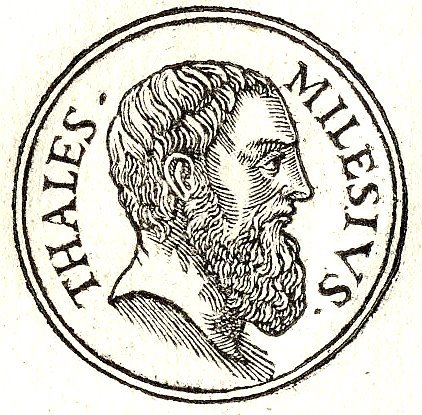
picture by Guillaume Rollie - Wikicommon CC BY-SA 3.0
Thales of Miletus
At first, when Guericke created the static electricity, we didn't have any explanation on why generation of static electricity was possible. It wasn't until 1720, when man now understood the phenomenon known as conduction and how it applies to electricity did we now understand how this was possible. One of the discoveries that lead to the understanding of this mystery is Charles Francois Due Fay discovery that there are two forms of electricity which are the positive and the negative.
Benjamin Franklin's contribution to electricity is of great importance. Unlike the previous ideas and theories that were centered on static electricity, Benjamin's idea was center on charges that flow (dynamic electricity). In the year 1752, Benjamin theorized that the thunder and lightning were as a result of collision of charges in the atmosphere.
He had the idea that when they collide they generate electricity. He had one question unanswered, which was whether the electricity from thunders and lightning (dynamic electricity), was the same as the electricity generated by rubbing glass with silk (static electricity). To find a answer to this question, he performed his famous experiment where he flew a kite during a lightning storms.
He made use of a string (that is a conductor) and at the end of the string he tied a key. When lightning struck the kite, charges flowed down the conductor to the key. He then collected the charges in a laden jar. He now compared the two of them, and found that the charges were the same, the only difference is that one is found in a conductor and the other only exist in an insulator.
The electric stored by Benjamin Franklin was too small to power anything. The first reasonable electricity that can power a device was generated in the 1870's when Thomas Edison built his first Direct Current (DC) electric generator. By the year 1881, houses were powered by electricity and even inventions made from that time onwards were designed to be powered by electricity. One of those such inventions is Alexander Graham Bell's telephone.
At this time, man have seen the beauty in electricity, thus he invested more in it and the result of that investment was the discovery of AC by Tesla, which is more efficient than Edison's DC. From that time on, man began to invent devices for generating electricity like the Photovoltaic cells and the turbines, and with these discoveries, more and more electrical appliances and machines were being built. Before 1935, electrical appliance like the bulb, e.t.c, have become a common thing in most households.
Note that the AC and the DC are both dynamic electricity
HISTORY OF LIGHT BULBS
Today, the most efficient electric bulb is the LED bulb, but the LED bulb isn't man's first electric bulb, but like I said, it is a bulb built by man as he tried to built an electric bulb, which doesn't possess the inadequacies of the previous ones. Let's get to see how the "light bulb" journey began and how we arrived to where we are now.
In contrary to general opinion, Thomas Edison is not the first person to invent the bulb nor even the incandescent light to be specific. In fact, more than 20 inventors invented their incandescent lamps before Edison built his own. The reason why he is referred to as the inventor of the electric bulb is that his own version of the incandescent bulb has unique factors that made is more important when compared to that of others. Those factors the bulb had in comparison with other bulbs includes effective incandescent material, high resistance and large vacuum.
The Early bulbs.
The first electric light ever was invented by Humphrey Davy in 1802. He achieved that while experimenting on electricity. On that day, he connected the end of two wired to a battery which he also invented, the other two ends he connected to a small piece of carbon. He observed that the carbon glowed and produced light. His invention was called the electric arc lamp, but this invention has its demerits. Some of these demerits is the fact that the light doesn't last long and it was too bright for the human eyes.
After that, Warren de la Rue, a British scientist which he invented an electric bulb in 1840. The bulb consist of a platinum filament enclosed in a vacuum tube. The idea of the bulb was based on the fact platinum has a high melting point, thus, when it is used at a high temperature with very little gas molecules to react to it, it could light up for a very long number of hours when electricity is passed through it. This bulb solved the Davy's bulb problem and not only that it has long life, it was even more efficient. But this bulb had one problem, and that is the cost of platinum was so high as of them that it was impossible to make the bulb for commercial purposes.
Later on, an English physicist named Joseph Wilson invented a light bulb in 1850. The bulb was made of a carbonized paper filament that was enclosed in an evacuated glass bulb. Unfortunately the bulb lacked good vacuum and also a good electricity supply and for these reasons, this bulb he invented, had a very short life span and it blackened quickly. Nevertheless, he kept working on the bulb and by 1878 he was able to eliminate these problem from the bulb.
Thomas Edison and the light bulb
Having realized the failures of the other bulbs, Thomas Edison began his research on how to develop an incandescent lamp that would be cheap and efficient. This was in the year 1878. After much trials he was successful and on October 14 1878, he filed a patent to protect his invention. However, this bulb has a problem, which is that it doesn't last long. Thus, he began to experiment on several materials he can use for the bulb filament. He had a slight breakthrough and by Nov 4, 1879 he filed another patent for his recent discovery. Yet still he wasn't satisfied, thus he did more research and few months later after much experiment, he discovered the carbonized bamboo filament which has the ability to light up a place for up to 1200 hours before it stops giving light. Based on this discovery, in 1880, Edison began to manufacture bulbs for commercial purpose.
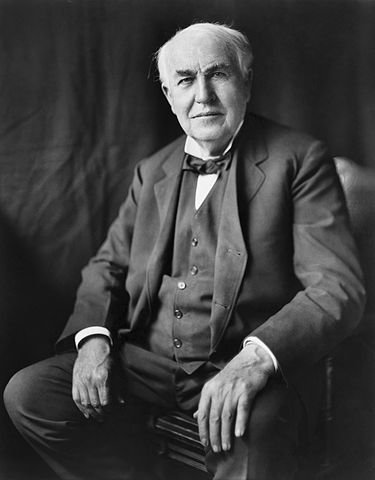
Picture by Louis Bachrach - Wikicommon CC BY-SA 3.0
Thomas Edison
Other events
After Edison's began to commercialize his bulb, In the year 1906, the General Electric Company discovered a method on how to make the bulb filament using tungsten, and in 1910, William David Coolidge, a staff of the same company discovered a way of making a more lasting tungsten filaments. By 1920s, light bulbs with adjusted power beams were being incorporated into cars (car headlamps e.t.c) and before the end of 1930s one time flashbulbs were been used for photography. In the 1940s greeted us with incandescent bulbs, while the quartz glass and halogen light bulb were the "in thing" in 1950s. In 1990s we has the biggest breakthrough of bulbs for the 20th century, as it was in that decade that compact fluorescent bulbs that had long life span were made. In the 21st century, man discovered the LED light, which is still the most recent advancement in man's journey for the generation of light energy. But this lead light is not as efficient as it was proposed to be. Luckily for man, nature has the solution to that problem, and that solution was seen when man studied the fireflies.
INSPIRATION FROM NATURE:- FIREFLIES
Fireflies or lightning bugs are members of the family of insect known as Lampyridae, and of the beetle order of Coleoptera. These small beetles have wings and they are famous due to their characteristics of attracting their mates or prey during the hours of twilight by the use of bioluminescence.
Bioluminescence is the word that is used to describe the ability of a living thing to generate light by itself.
Their larvaes also emit light, because of that, these larvaes are called glowworms. This light produce by the firefly has no ultraviolet or infrared frequencies, and can either be pale red, green or even yellow. The wavelength of the firefly's light is about 510 - 670nm.
There are more than 2,100 species of fireflies in the world and these fireflies always inhabit in places with tropical and temperate climate conditions, especially in wet areas, areas with so much marshes. For some species, both the male and the female fireflies can fly, while in some, only the male can.
HOW DOES FIREFLIES PRODUCE LIGHT
The glow from fireflies is as a result of a chemical reaction that takes place inside their bodies. The fireflies contains substances like calcium, ATP, luciferin, oxygen and luciferase. Now, whenever these substances adenosine triphosphate (ATP), Calcium, oxygen, luciferin react in the presence of a bioluminescence enzyme known as luciferase, light is been generate. But unlike the conventional light in which most of the energy is lost in heat, this light generated by the fireflies is very cold as the night as none of the energy generated by the reaction is lost to the heat, rather, all of it is converted to light.
The firefly has a way of controlling this reaction. In the body of the firefly, all these other chemicals are already mixed up, but they won't light up because of the absence of oxygen. Thus, what the insect thus is to control the addition of oxygen. All these reactions take place in a specific cells in the body of the fireflies known as the photocytes. Now when this light have been generated, it is emitted out of its body through a part known as the cuticle.
When light travels through the cuticle, it travels at a very slow speed when compared to the speed it travels through the air. What this means is that some of the light would be reflected back to where it was generated resulting to a dim in the light. But surprisingly, it doesn't happen like that in fireflies. Recently, it was discovered that the reason why it doesn't have light that to fireflies is because of the unique surface its cuticle possesses. What this surface does is to reduce is to reduce internal reflection, resulting to more light escaping from the body of the firefly.
THE MECHANISM INVOLVED
When Bay, Vigneron and others studied the cuticle of a firefly under a microscope, they observed scale-like structures of not the same size and each of the scale protruded like that of the roof of a factory. They ran a simulation of the model of the cuticle and observed how the structure affected the amount of light that emitted. They also observed that the misfits scales allowed more light to be emitted than others. Thus they concluded that it was these scales that reduced the internal reflection of light in the firefly.
APPLICATION OF THE IDEA
LED BULB:-
When these scientists made they discovery, they tried to replicate the same pattern in a LED bulb. What they did was to deposit a layer of a light sensitive material on top of the LED bulb, then they exposed this coating to a laser so as to generate the triangular factory-roof profile on the layer. Now the problem with the LED bulbs is that they are made with materials that even slow the rate at which light travels more than that of the cuticle, thus this results to heating and less light output. Thus, these scientists adjusted the protrusion of this triangular factory-roof profile made on the LED bulb to a height and width of about 5 micrometers. This factory roof coating result to a LED bulb that emits more than 50% more light than the former LED bulbs.
Other Applications
Even though that man have not achieved it yet, it is proposed that the application of this idea in the design of television sets will give us a TV set that requires less amount of energy. Hopefully man would achieve this very soon.
CONCLUSION
Yet again, nature won't cease to amaze us. Even in the smallest of things like the fireflies, deep secrets and solutions to man's technological problems are hidden. The number of plants, animals and objects in the world is so much that if really that nature hide his secrets in each one of them, then be rest assured that there are yet so many laws to be discovered, and so many things to be invented. All these secrets are hidden in plain sight, all it takes for man to discover them is a diligent search.
Just a discovery by man on how the fireflies are able to emit almost 100% of the light energy it generates from its chemical reaction, gave us an electric bulb that is not only energy conserving, but is also long lasting, brighter, and less hot, thus, giving you no need to worry about the room getting hot, or your bed being close to the electric bulb, or even having so much to pay to the power stations. You can imagine what the next invention inspired by nature will be like.
The world is yet to see the best invention to be inspired by nature. Although no one knows when or how man is going to discover it, when man do, believe me, the word "amazing" won't be able to define it.
Till we meet again
REFERENCES
Brighter LED inspired by fireflies
Scientists mimicking the fireflies

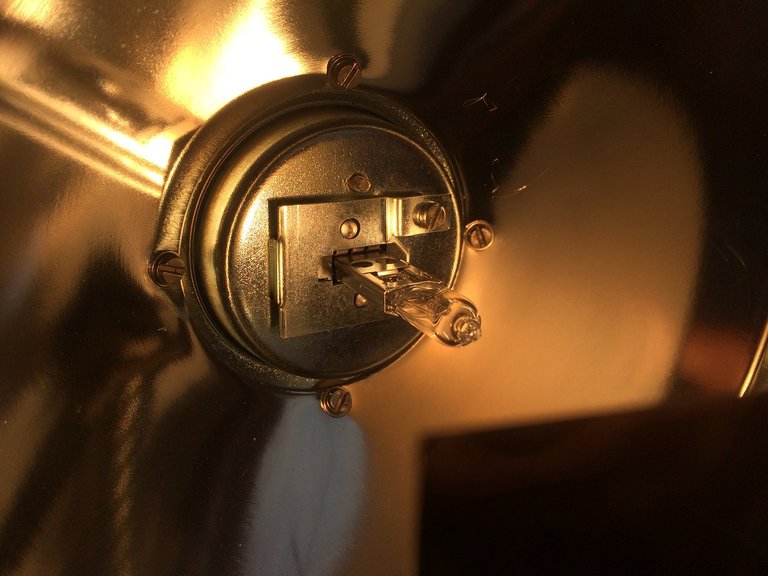
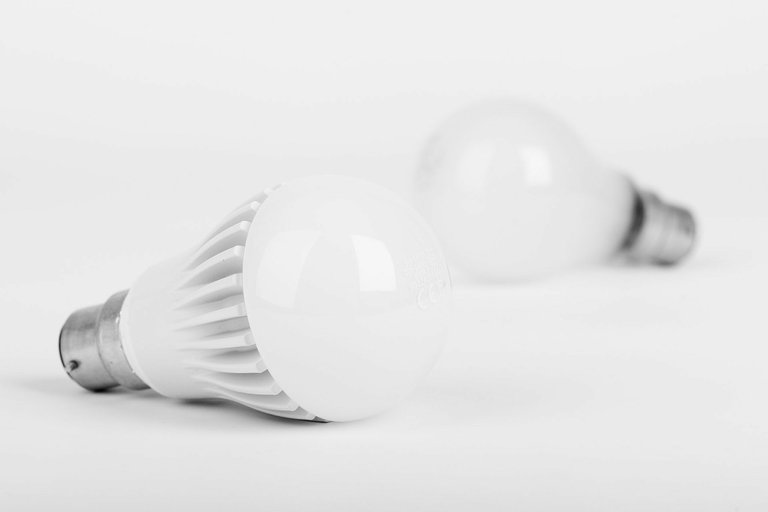

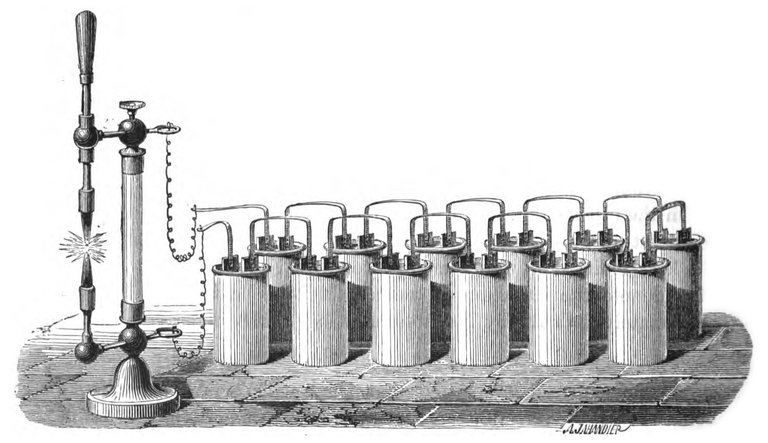




@whileponderin i love the way you relate man's inventions to the natural things around us. A lot of things come to being while we're ponderin
Thanks @rharphelle.. You do have a way around automobiles, I still marvel everytime I see your article. Thanks for the thoughtful comment, I do appreciate.
Oh I am flattered! Thank you.
Huge and full of knowledge
These luciferase enzymes not only inspires us to make physical tools but are also have application in biomedical science.
That's true @micro24. Am glad you found this article informative, thanks for stopping by.
Change that to:
God's creation, AKA "nature" won't cease to amaze us once we accepted that "nature" was the "intelligent design" of God and nothing happened by "accident.
I can see that you a religion fanatic, please endeavor that in my subsequent posts that any comment you will make on any of them should be related to the subject matter, or else, I will be forced to consider it a spam. Thanks.
No, I am not - it is point - counterpoint.
I am on topic - not spam of any kind
It is a free country and I consider this as a "get lost" threat and therefore, I'll put you on mute to be safe from it.
"free speech" and criticism is not welcome here.
see ya (no I won't) ...
Am sorry. But I can't help but wonder why you took time to read the post, only to detect "faults" without even taking a moment to upvote the post and you are wondering why I won't consider it a spam?
Am sorry if my thoughts came out wrongly, but I hope you understand one day. It was nice meeting you.
The author wrote the article how he thought it was relevant.
You can't pressure the author to change his article, it's the basics of freedom of speech. This constitutes a form of abuse in my view.
freedom of speech is tolerance of offensive speech.
How was I abusive?
How was I even offensive?
I made one point: give credit where credit is due. How is that abusive? Please quote my words.
and, calling me
is not offensive? wow!
You demanded him to change "his" article. I didn't see any "please" there. It was demanding.
And no, freedom of speech is not the tolerance of the untolerant. This is just abuse. Freedom of speech is the freedom of saying your own ideas, not to demand others change theirs. There's a huge difference and if you haven't noticed it yet, I suggest you reread your initial statement.
and, for that, I am putting you on mute as well for being
abusive- your words.ha!
Muting me is just like putting your head in the sand, like an ostrich. The problem doesn't go away, but from your POV, you don't see anything, therefore it's solved :)
Terrible way to handle an argument, dear Sir.
meaning - change it to read: "God's creation won't cease to amaze us"
It is a suggestion for any reader to consider including the author and there is no word to force anyone to do anything.
AND, IF ANYONE reads this and find offensive or abusive, then, it is PURELY YOUR IMAGINATION!
Electricity was discovered, but, AC was invented, the devices was anyway.
Am glad you stopped by.
For all readers, please read the threat that I received for merely providing a couple of point - counter point:
The amazing things that we learned from "nature" and the greatness of Thomas Edison.
Both points of view rob the credit where it is due.
Tesla is the great inventor and in the time of Thomas Edison, Tesla is the technology genius, much more so that Thomas Edison could ever imagine to be. Tesla failed in business, as technologist or artists often ended up poor.
As to "nature" versus a "creator" or "intelligent design", you will have to go where "free speech" is tolerated - obviously not here.